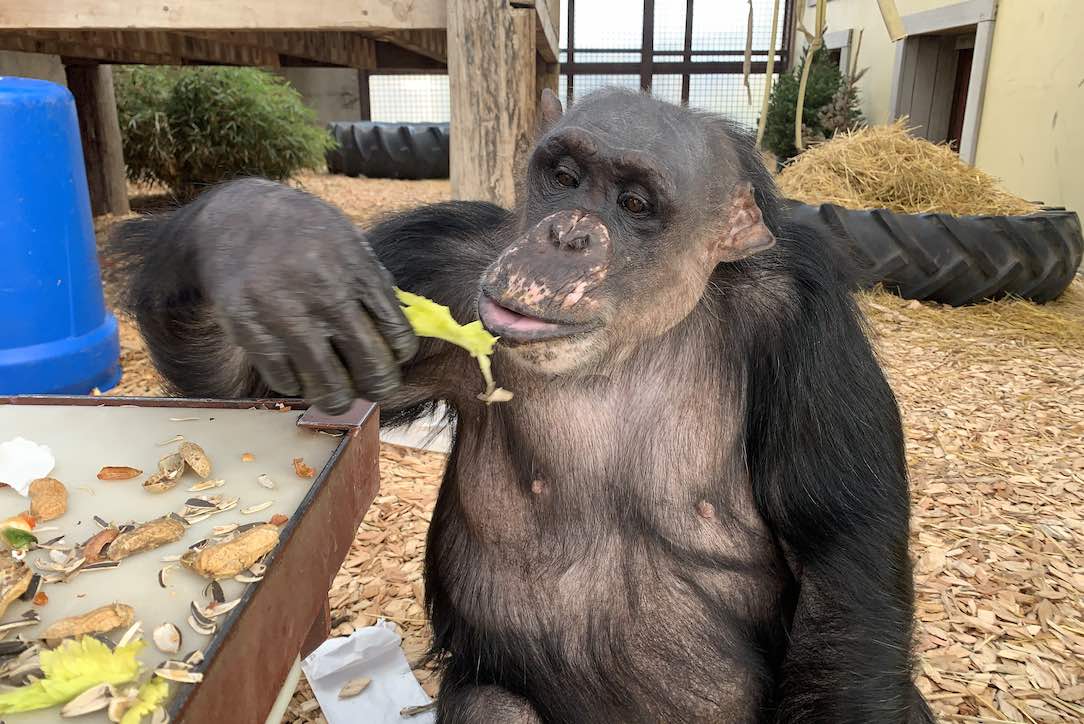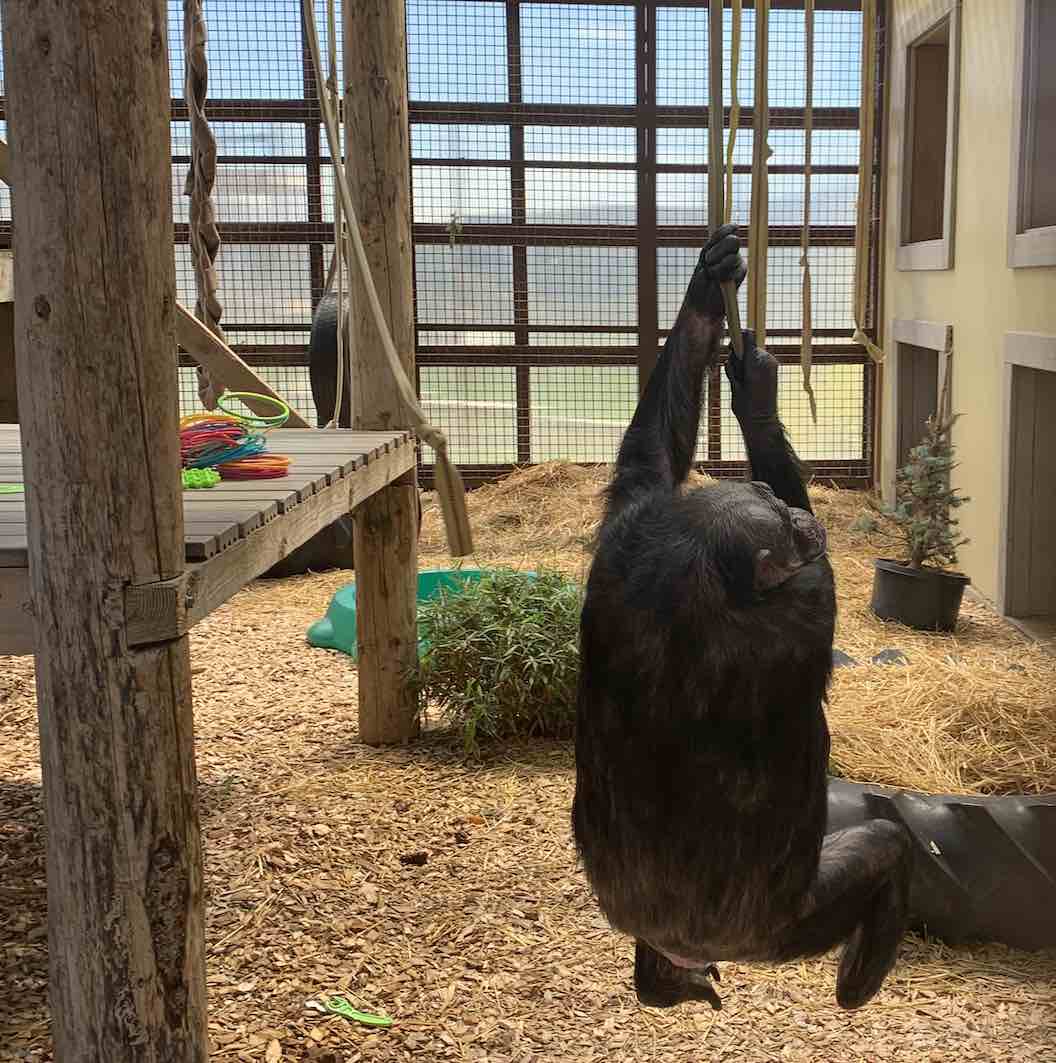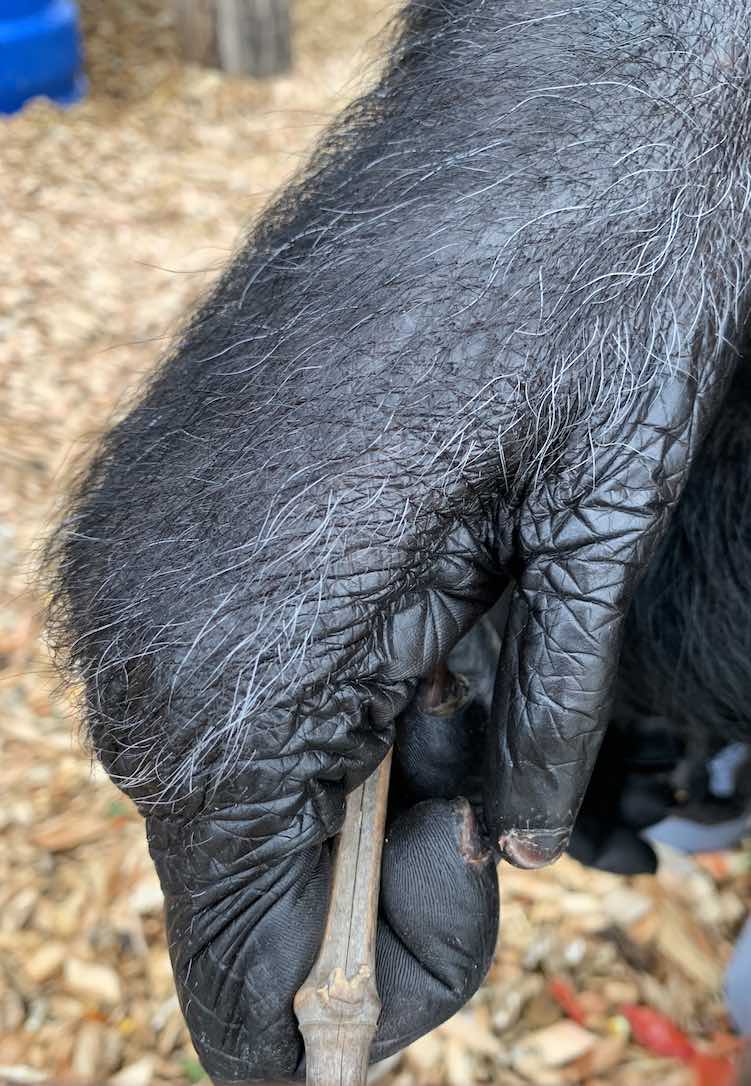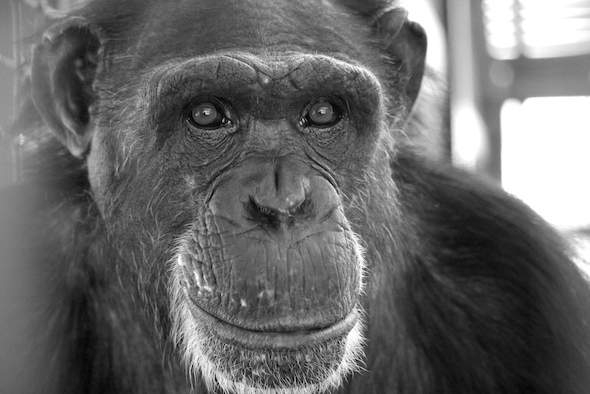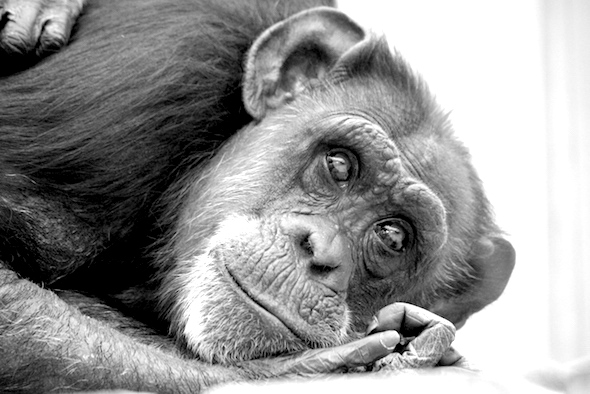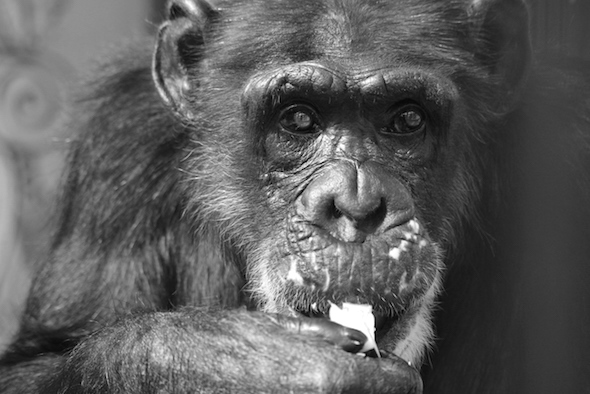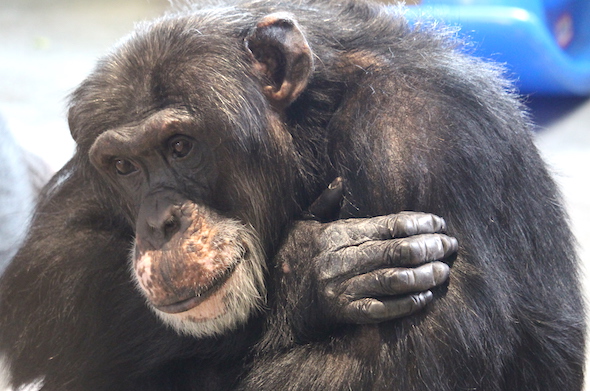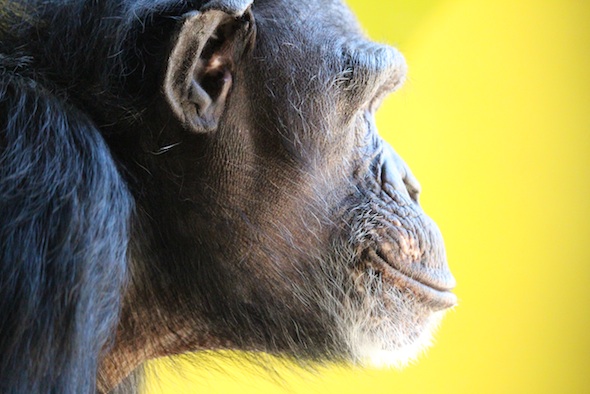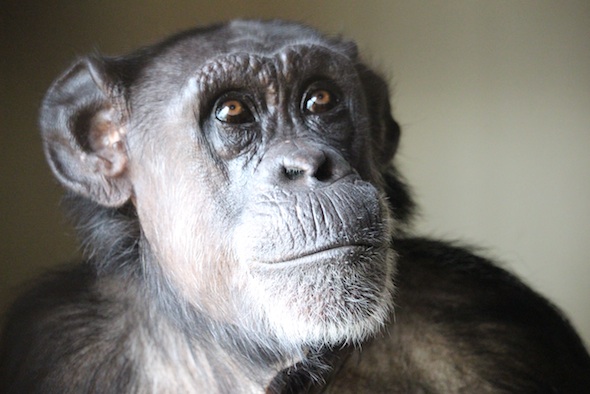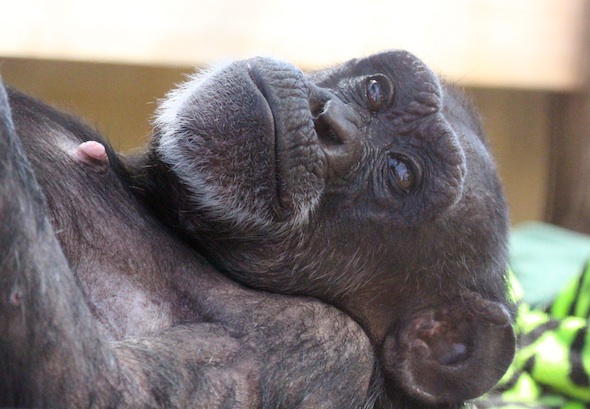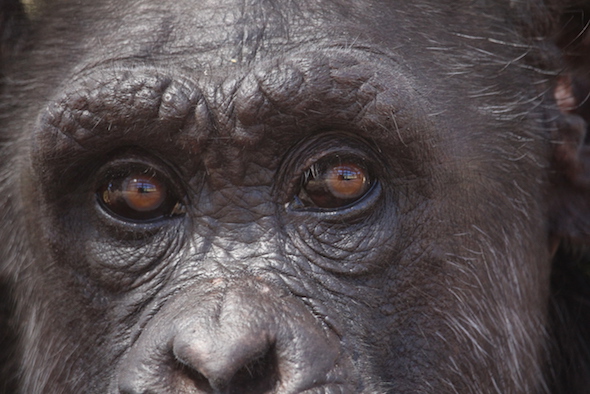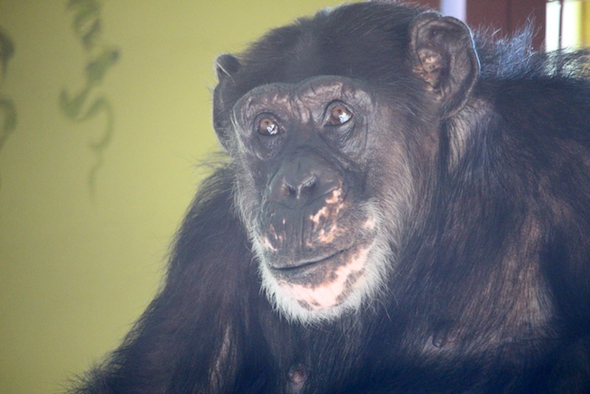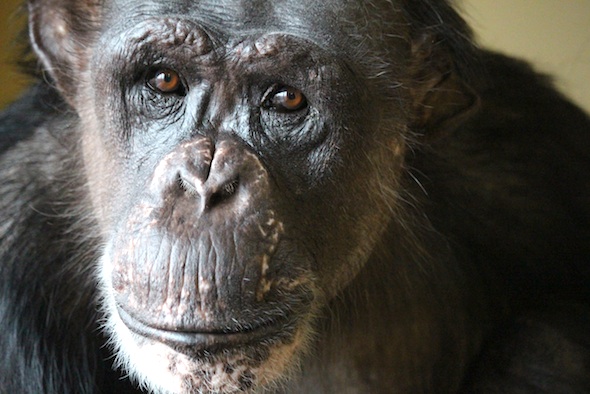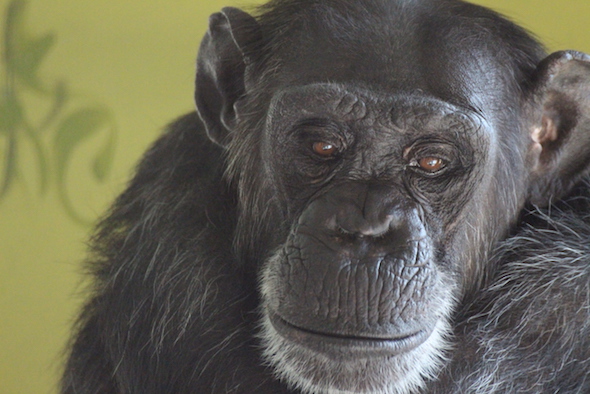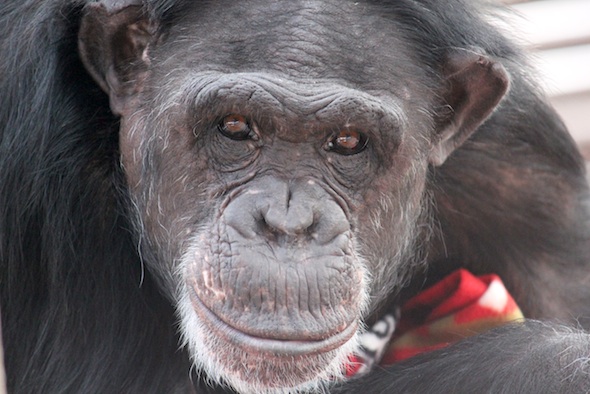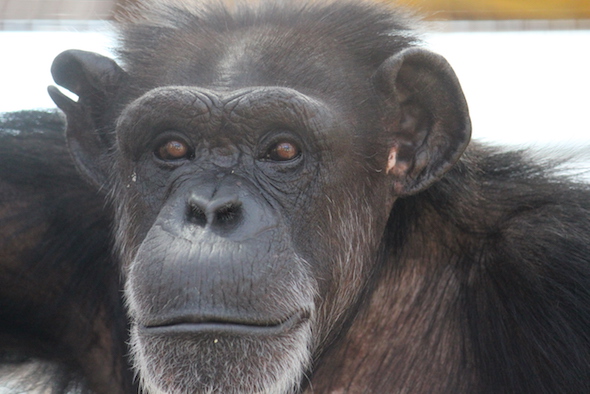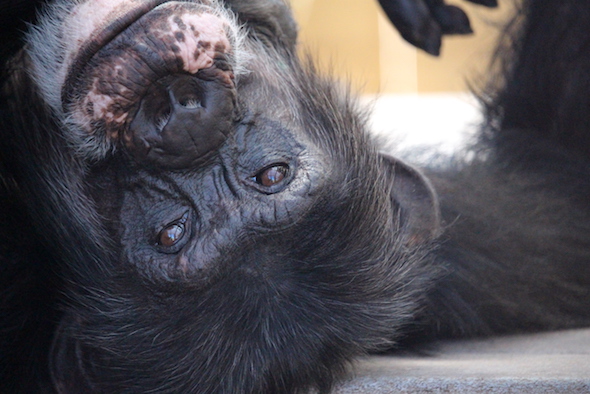I was going wax poetic about chimpanzee toes, but I think the video does it for me.
photo
Why Them?
There’s an image from the news last month that I can’t get out of my mind. I’m betting many of you saw it too. It was a photograph, shared in this New York Times article, among many other publications, of wooden crates strewn across a highway, some of them upright, some of them on their sides. There are stickers on the crates that say “Live Animals” and “Do Not Tip”.
We know from the reporting that these crates held cynomolgus macaques, often referred to as “cynos” by caretakers in biomedical laboratories, and commonly called both crab-eating and long-tailed macaques. We know that there were around 100 monkeys on the truck that crashed in Pennsylvania and that they were being transported from John F. Kennedy airport to an undisclosed biomedical facility. The main headline was that several of the monkeys “escaped” when the truck crashed, and that the public was asked to stay away from the area and avoid contact with the monkeys.
We also know that these macaques were shipped from Mauritius to JFK. Mauritius is a small island country in the Indian Ocean, off the eastern coast of Africa, 500 miles east of Madagascar. From my brief background searching, I found that Mauritius is a beautiful island with an interesting political and economic history that has resulted in a diverse religious and ethnic population, with many of the human residents decedents of indentured servants used to farm sugar plantations. Like a lot of the world, it was under the control of different European nations over the years and is now independently governed.
Macaques are not native to the island. They were thought to have been brought there in the 1600s by sailors. Wild populations of these macaques now thrive on the island and are considered to be an invasive species. Starting a few decades ago, wild macaques were captured and captive-breeding programs began specifically to export their offspring to biomedical laboratories primarily in the United States and the U.K. Mauritius supplies as many as 10,000 cynomolgus macaques per year to U.S. laboratories.
More recently, and controversially, laboratories are being developed on the island to do research there rather than only relying on the export of the monkeys to labs in other countries. If you type “Mauritius monkeys” into any search engine, you will find a lot of information about the monkey trade there and the animal activism that has resulted from that trade.
It’s still difficult for me to cognitively comprehend the scale of biomedical research using non-human primates. It is estimated that there are around 75,000 monkeys used each year in biomedical research, including breeding programs and holding facilities, in the United States alone.
Even those of us who know a little bit about biomedical research on monkeys are rarely confronted with the reality of all of this primate research. The crates that were tossed from the transport truck during the accident and the monkeys who got out of their crates to briefly roam Pennsylvania, I imagine in a terrified mental state, were a tiny reminder of all the individual lives that are sacrificed for biomedical testing.
Of course the news cycle is quick, and I doubt many people who read the original headlines are still thinking about those monkeys or the tens of thousands of their kind they represent.
You might be wondering at this point what happened to the escapees. Some of the stories I saw just mentioned that they were “accounted for” within a few days, though the Associated Press expanded upon that and said that three were “euthanized” once they were found. Further reporting specified that the macaques were shot with firearms.
The airline that initially shipped the monkeys, Kenya Airways, has since publicly stated that they are ending their contract with the undisclosed company that had the monkeys shipped to the U.S. Perhaps the CEO of Kenya Airways, like me, can’t get that image of those crates in the highway out of his mind.
We at Chimpanzee Sanctuary Northwest have plans for the future that include building and caring for monkeys, perhaps monkeys that are now part of biomedical research. It’s very unlikely that the sanctuary community will ever be large enough or have the funds to retire all monkeys from biomedical testing, and there are currently no restrictions on “euthanizing” non-chimpanzee primates for purely management or financial reasons (chimpanzees hold a unique place in the biomedical research field for this practice of not being killed when they are no longer useful).
I often think about the chimpanzees who lived their entire lives in laboratories. The ones who were part of the system long before sanctuaries existed, and the ones who are still part of the system because they have been deemed ineligible for retirement.
There’s no just reason for particular chimpanzees to have been given the opportunity of a different kind of life in a sanctuary while others were not, and the same will hold true for monkeys.
Here’s the tiny bit of hope, though:
We will keep working for those chimpanzees still in laboratories. We will continue to try to give the chimpanzees in our care a true sanctuary life. We will continue to share their beautiful faces and personalities with you, like these photos I took today of brother and sister Cy and Lucky:
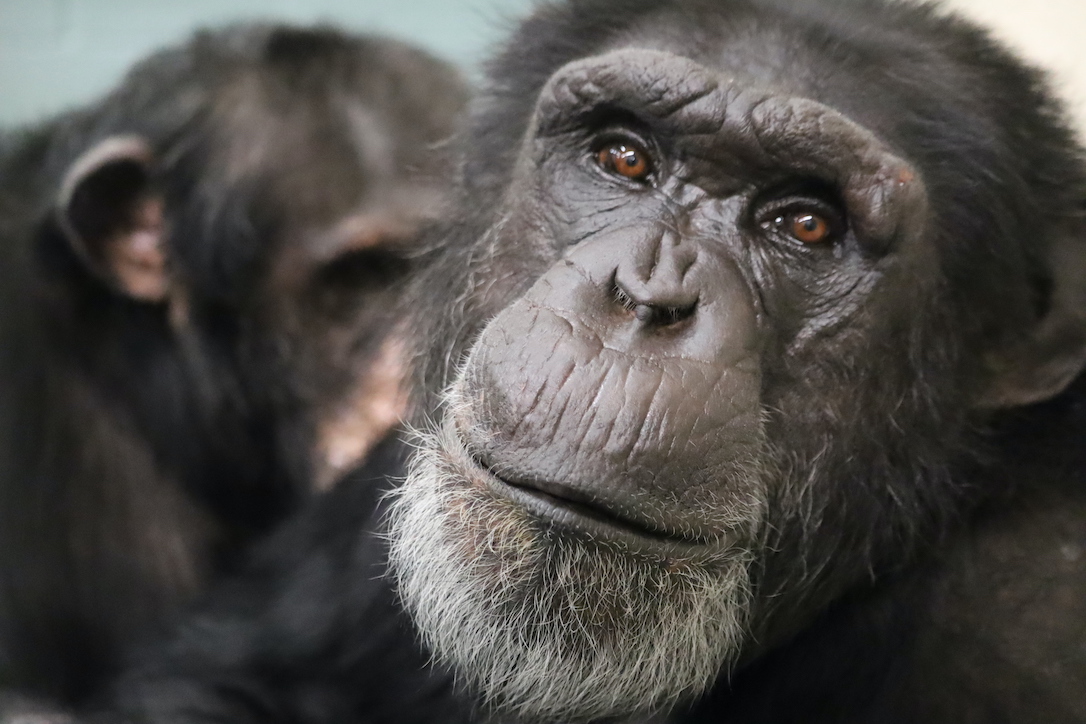
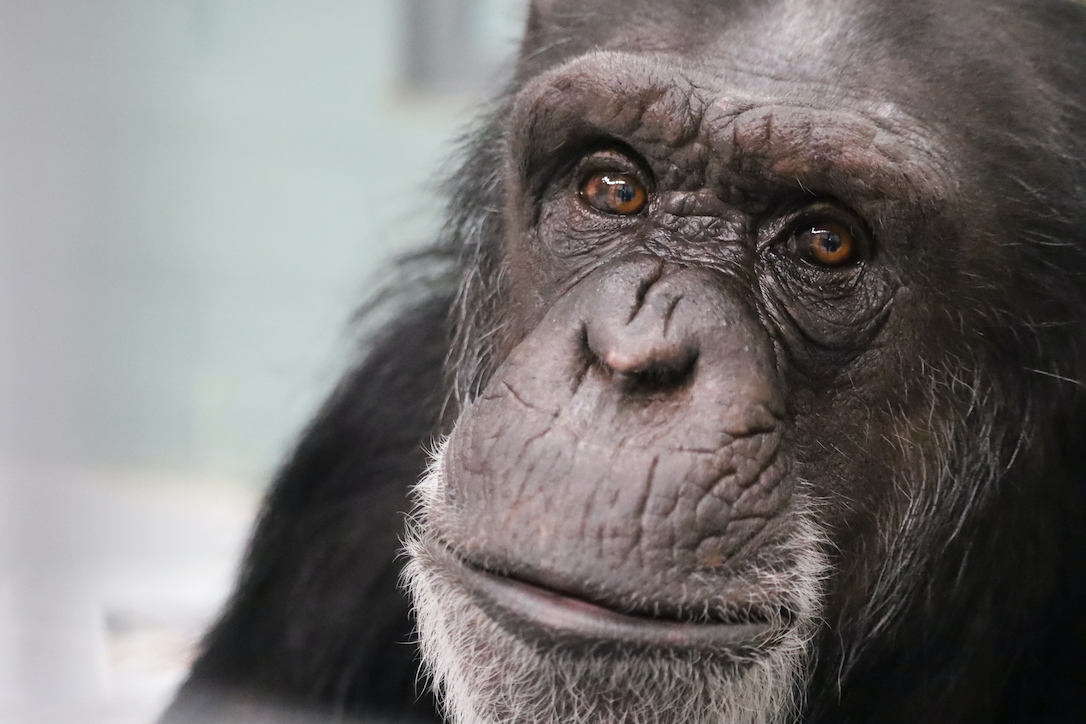
And you will continue to remind others that their lives are important.
There are some monkeys that are being retired from biomedical testing to other sanctuaries now. One day we will join them in providing a home for monkeys. It won’t be all the monkeys who deserve retirement, but for those who come here, we will give them a true sanctuary life and we will share their beautiful faces and personalities with you. Because their lives are important too.
Some day in the future, I can’t even begin to imagine when, but some day, there will be a celebration for the last monkeys in biomedical research in the U.S. going to their sanctuary home.
Portrait of a Pant Hoot
The day started out on the warm side, considering that we are well into the month of December. The chimps’ greenhouse spaces were cozy all morning.
A storm came through in the afternoon, making the most delightful sound as the droplets hit the greenhouse roof panels.
Just as the rain began, Dora went into her greenhouse, looking up towards the sound:
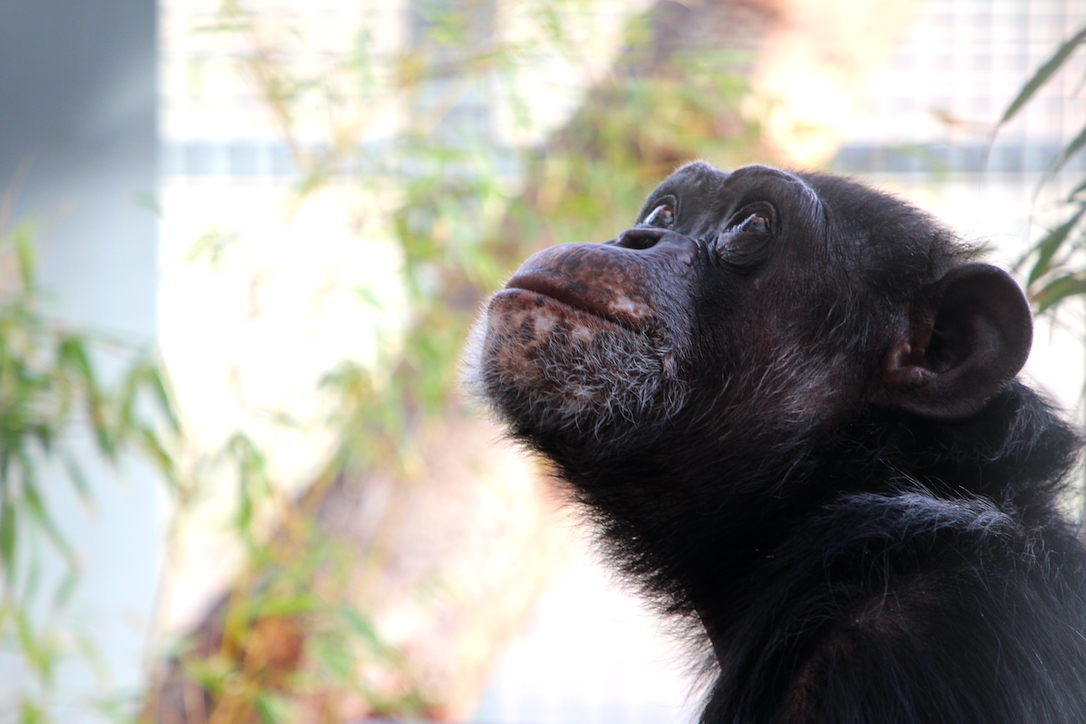
glancing at me:
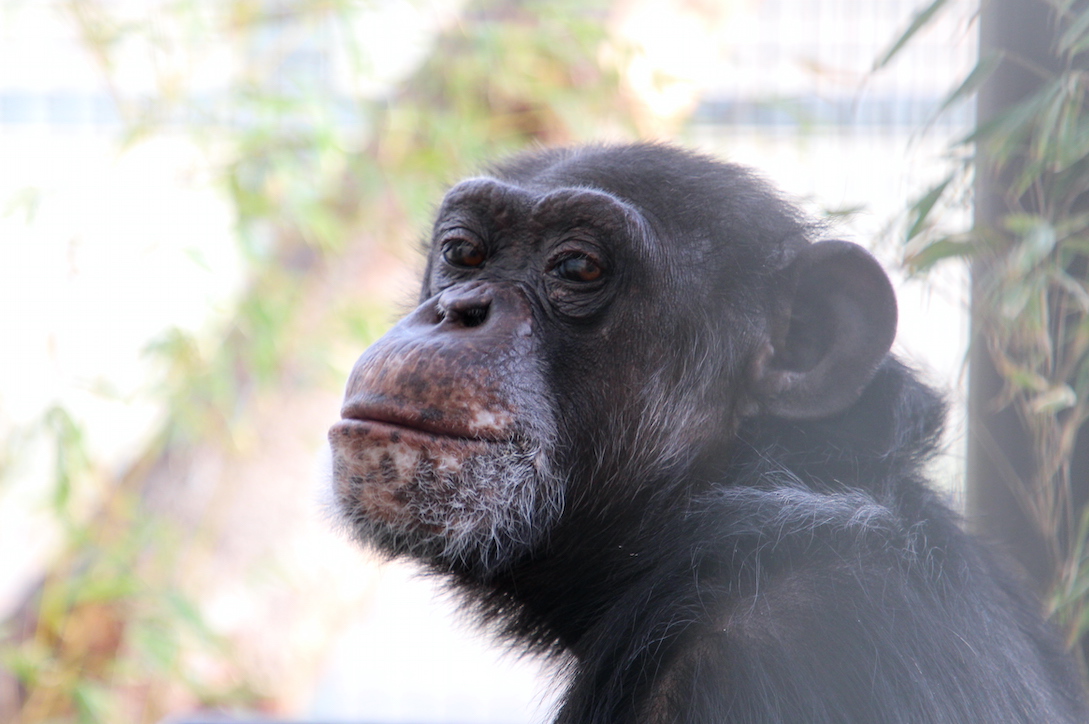
and then beginning a glorious chimpanzee response to the rain – a classic pant-hoot (for a classic video of pant-hoots, go here):
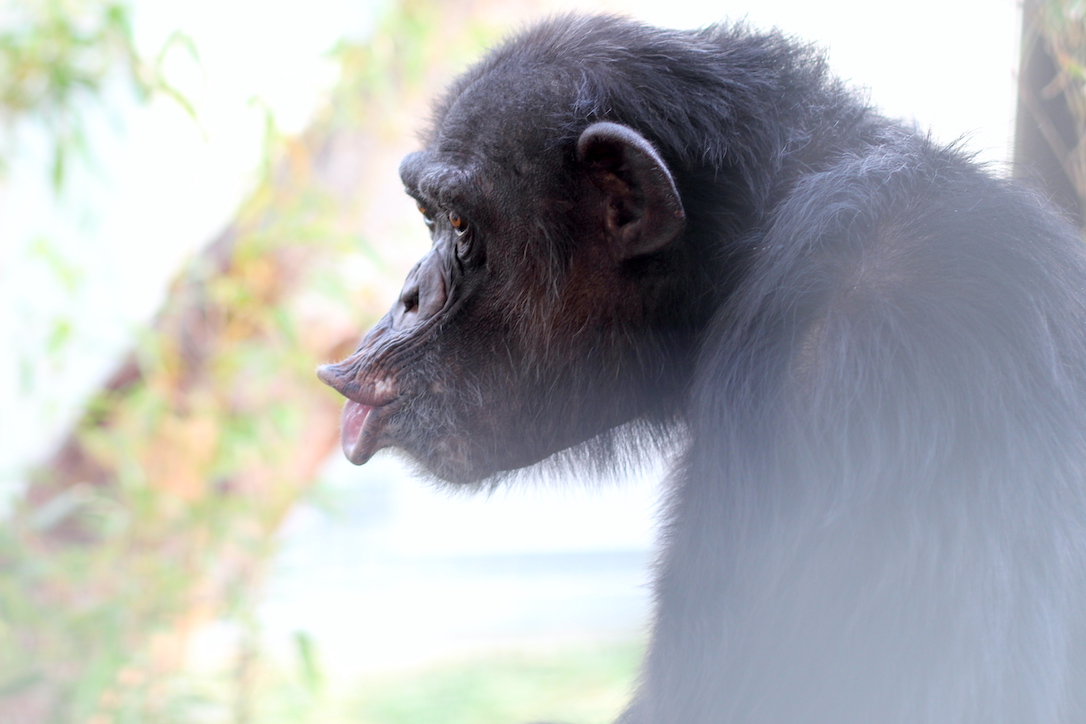
Her display was short-lived. She calmly retreated to a windowsill:
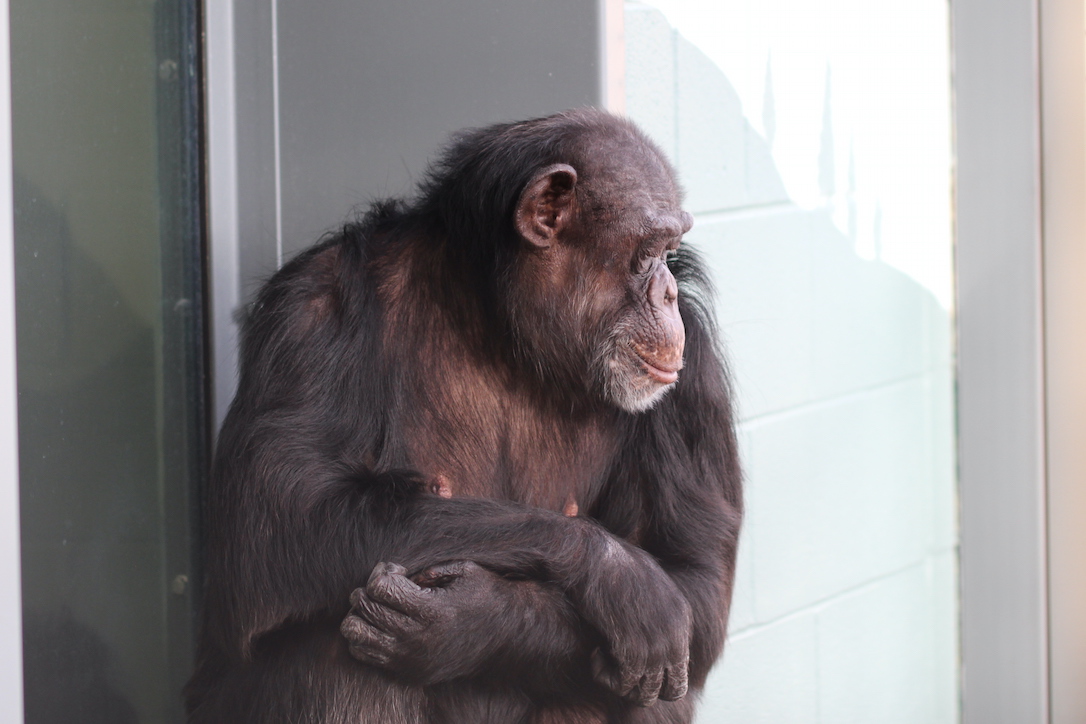
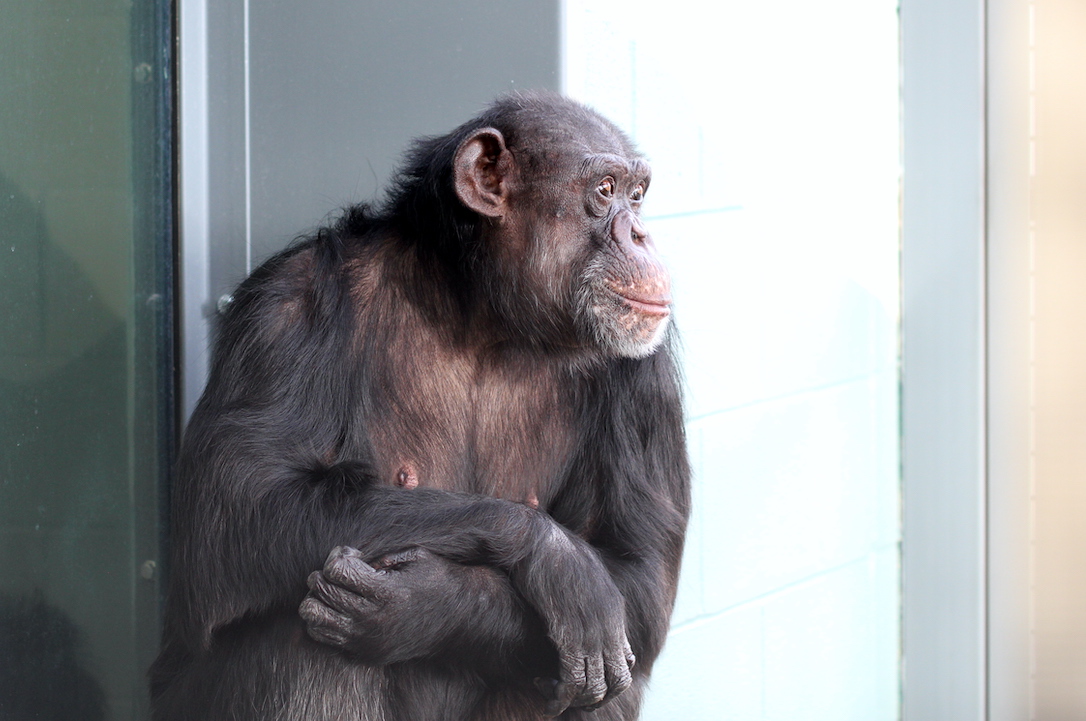
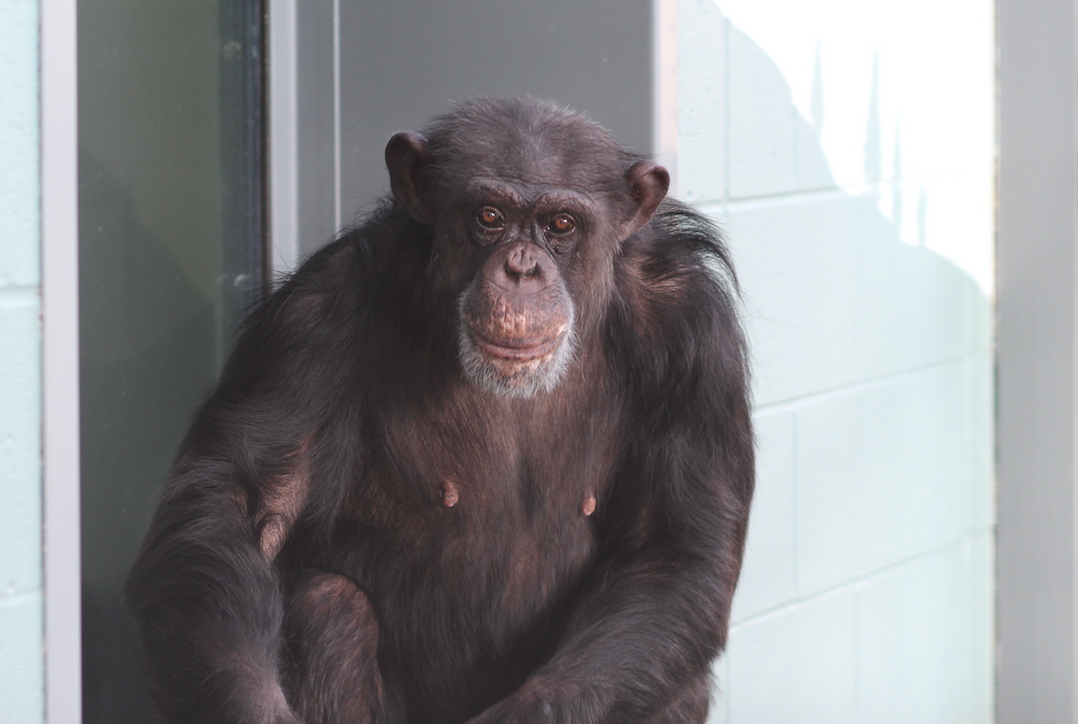
Chimpanzee Paparazzi
The next time a stranger asks me what I do, I think I will answer that I’m part of a paparazzi team for some high-profile niche celebrities, focusing on positive images and stories.
The camera was clicking away when I was taking these photos of Queen Negra today:
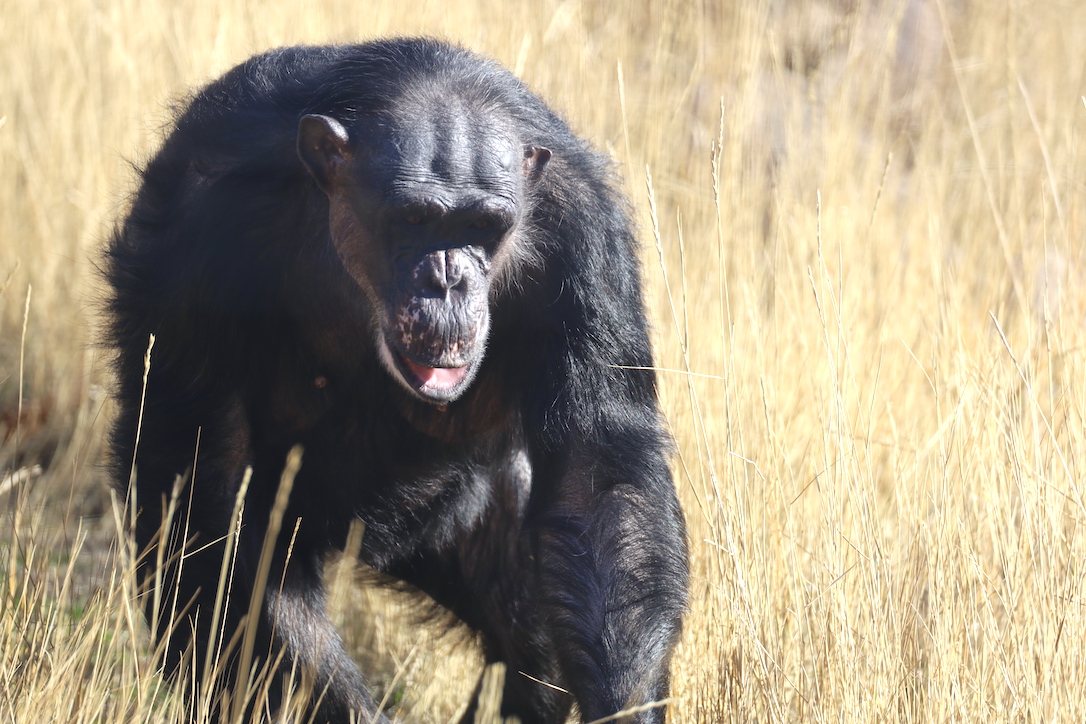
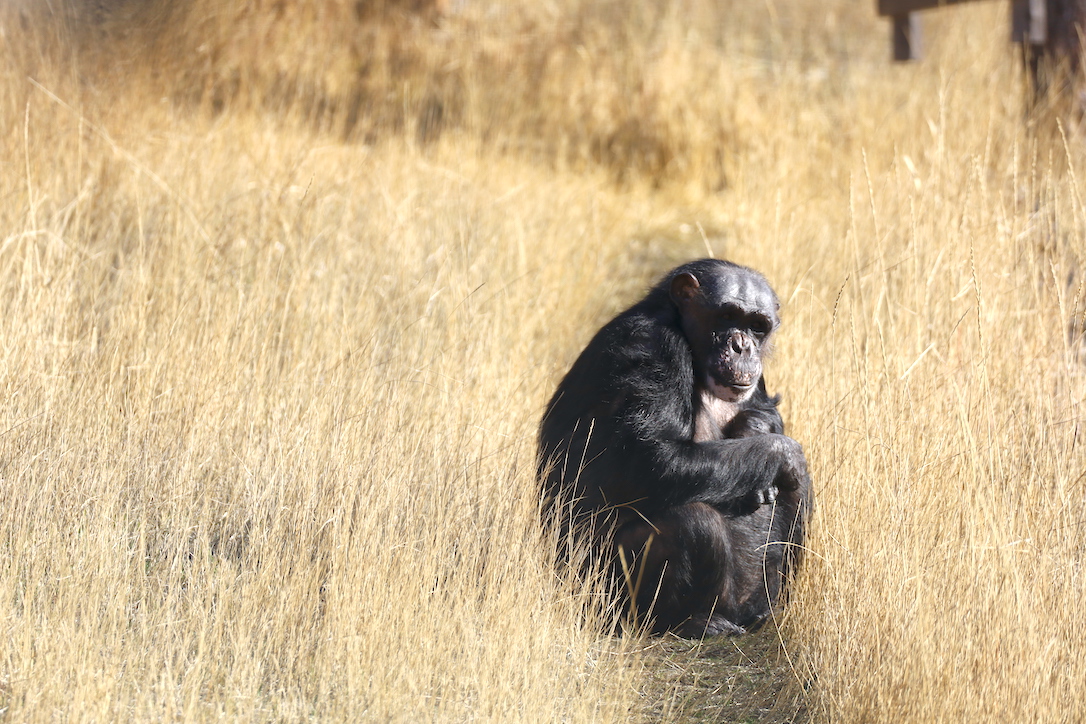
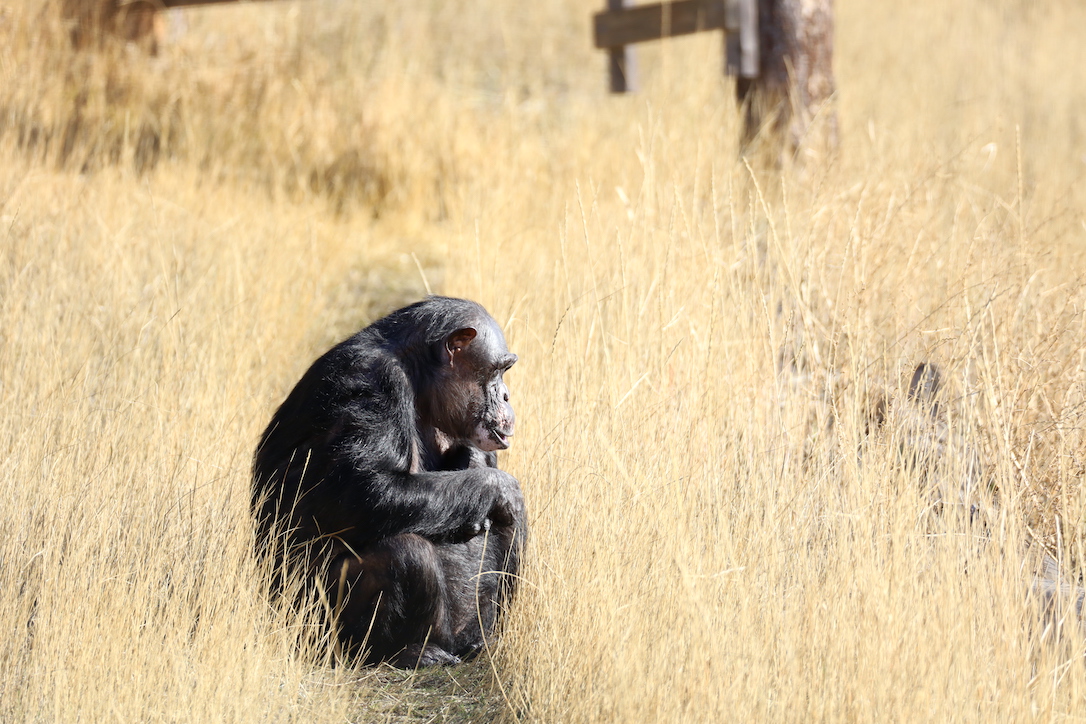
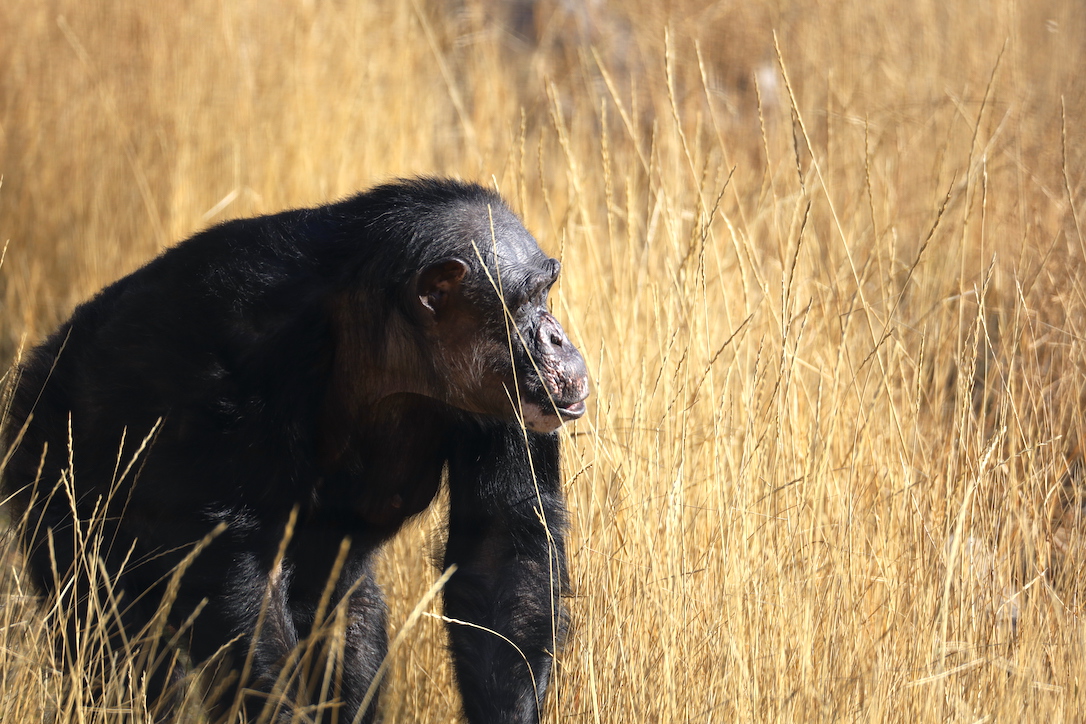
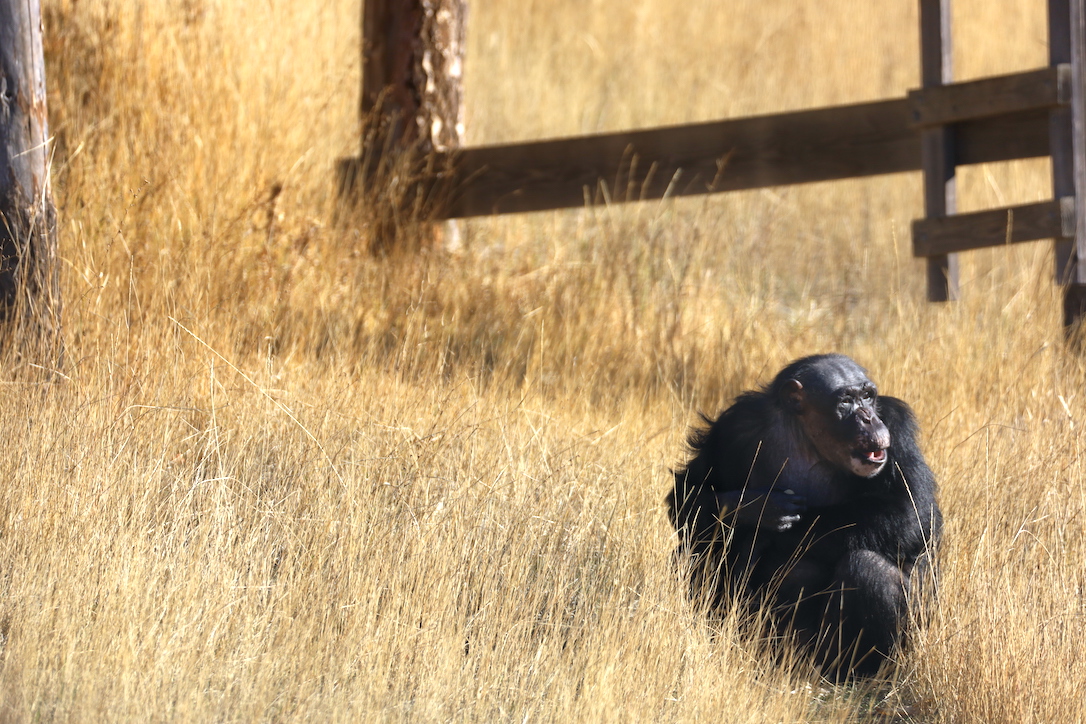
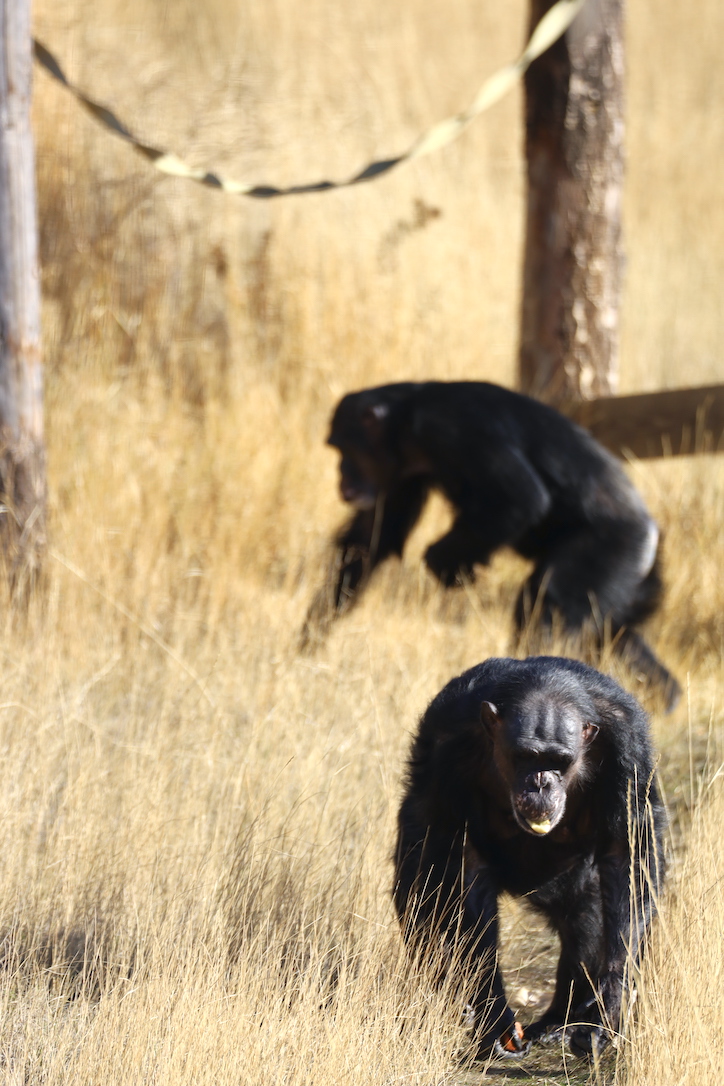
Co-paparazzi J.B. captured this image of the devilishly handsome Willy B while he was in the Courtyard.
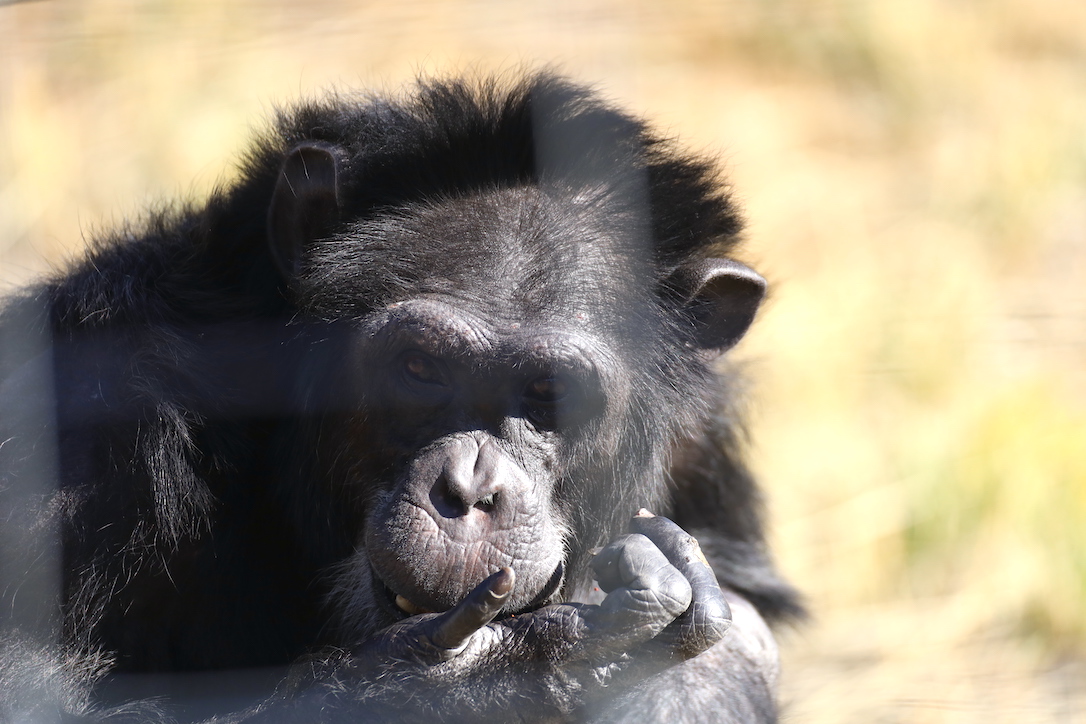
Growing Old(er) Together
Today I turn 47. On June 13th we will celebrate Queen Negra’s 47th birthday.
I hope you will consider honoring us both today, as well as supporter Monica Best, who had her own birthday last week, by donating to our GiveBIG page.
In truth, we don’t know exactly how old Negra is or what day she was actually born. No one celebrated her birthday before she came to the sanctuary. This year, however we are inviting all of you to join her birthday celebration.
We chose June 13th to celebrate her because it was the day she and her six friends arrived at Chimpanzee Sanctuary Northwest in 2008. It marked a new birth for her and for all seven of the chimpanzees.
When Negra and her friends arrived, I was the Director of Outreach for the sanctuary and J.B. was the Director of Operations. We had met the chimpanzees at the Buckshire Corporation months previously and wrote about those early meetings when this blog was in its own infancy.
I absolutely do not have a favorite chimpanzee. I truly love them all. There’s something unique about each of them that makes me admire and appreciate them. That said, it didn’t take me very many visits to confess my love for Negra.
Back in 2008 when so many people were working incredibly hard to get the chimpanzees to CSNW, I never would have guessed that I would still be here twelve years later. And I definitely would not have guessed that Negra would still be here.
Supporter Kathleen Corby, in wishing me a happy birthday today, reminded me of this blog post I wrote about Negra a couple of years ago.
There’s probably a common theme to many of the posts I’ve written about Negra, who was the oldest of the group. The theme, whether written explicitly or just implied, is the limited amount of time Negra might have to experience her sanctuary life and therefore, indeed, every single moment was invaluable.
Witnessing Negra do even the simplest things brings me immense joy, like when she was eating scraps in the greenhouse last week:
or swinging from the fire hose Super Negra style the other day:
Not bad for a 47 year old, if I do say so myself.
Two days ago, Kelsi and Chad were attempting to close up the chimp house after dinner. J.B. and I live in the residence on the property, a stone’s throw from the chimps’ home. I had gone outside to take some trash out, and I noticed Kelsi and Jamie on a walk. Jamie noticed me too and insisted I join them.
One walk turned into a few walks. After a bit, Chad went home and Kelsi went back inside to finish up some tasks.
It was the most beautiful evening I have ever experienced at the sanctuary. The weather was perfectly comfortable, with very little wind, which is unusual in the spring. The grass had taken on that almost unbelievably green luminescence, there were flowers, birds, and squirrels in every direction, and the fruit trees were attracting thousands of pollinating insects. Life was literally everywhere.
The cows were grazing on one side of me while Jamie slowly sauntered on the other side. She was picking dandelions, eating their stems, and discarding the flowers.
There was a magazine article that came out several years ago that described the sanctuary property as bucolic. At the time, it made me laugh. Only a writer who lived in a big city would use that word to describe the grounds. But the other night as I looked around, listening to the cows happily grazing, watching the swallows flitting by, and walking ever so slowly on the other side of a fence from a chimpanzee, the word came back to me. If ever there was a bucolic scene, even with the unusual addition of a chimpanzee, it was this.
Jamie’s walking ritual has always presented opportunities for me to reflect. It’s ironic, in a way. Jamie can be a very intense individual. No one would describe her as laid back. But her need to walk and her desire to have a human join her has helped me on multiple occasions tamp down my own moments of intensity, allowing me to relax and be in the moment.
And so it was the other night as we walked or just stood and took in the bucolic scenery around us.
When she was finally satisfied with walking, we settled in the greenhouse so she could groom the boots on my feet, as that is perhaps the most important part of her ritual.
I took this photo of her hand holding the stick that she poked through the mesh to groom my boot:
I’ve been noticing those hairs on Jamie’s hands for about a year. Like humans, as chimpanzees age, sometimes their hair loses pigment and fades to gray.
Foxie too has been collecting gray hair these last few years. Here’s a photo I took of her the day after her exam as she lie perfectly content with her purple haired doll. In addition to the gray hair, we know from Foxie’s radiographs from earlier this week that she has arthritis in one of her hips. Other than those normal signs of aging, she seems to be in tip-top shape.
We’ve long described the chimpanzees as aging in reverse. They really did gain years on their lives when they arrived at the sanctuary. There is no denying now that they are aging in a forward direction.
Just like me.
Just like all of us.
Every moment is precious because there are a finite number of moments, and we don’t know what that number is. It’s both the tragedy and also the incredible beauty of our own lives and of caring for other living beings.
Who would have guessed that we would be so lucky to have had so many moments – coming up on twelve years worth of them – with these special seven chimpanzees, and now with three more special chimpanzees and four very cool cattle.
What a privilege to be getting older with all of them. And what a privilege that you are here too, a part of all of our lives.
The Beauty of Grey
As you probably know, we have an enrichment calendar that guides the volunteer or staff member who is putting together enrichment for the following day for the chimpanzees. It provides some sort of theme for the day, like “art day” or “troll scarves.” Sometimes it’s just a color, which causes us to dig through the enrichment bins and perhaps unearth that blue or red or green toy that hasn’t surfaced in a while.
I was laughing yesterday about the theme for today’s enrichment: Grey Day.
It is entirely appropriate, being that the outside world is on the grey spectrum today. Right before I opened the door to the hill to let the chimpanzees decide whether or not to venture out into the overcast day or stay inside, a bald eagle flew overhead. I was marveling at how majestic he was, gliding through the sky, unmistakable from other birds with his starkly contrasting white head with black wings.
This led me to wonder if perhaps I was thinking about Grey Day in an entirely unfair light (so to speak). Grey is beautiful. To prove it, just look at these black and white photos of the chimpanzees. Removing the distraction of color can be a special thing. With the photos of the chimps, I just want to study them a little bit longer, and I notice features that maybe I would overlook in the same photo saturated with color.
So, today, we embrace the grey.
Jamie:
Jody:
Missy:
The Eyes Have It
I took some photos of Burrito this morning that caused me to admire his face and think about the chimpanzee facial features that I love.
The top of my personal “awesome chimpanzee facial features” list is the brow ridge (also known as supraorbital torus, ridge, or arch).
Though much less pronounced in chimpanzees, humans have a supraorbital ridge too – our eyebrows normally sit near the bottom of our arches.
Each chimpanzee has a somewhat unique brow ridge – I wonder if you could identify a chimpanzee by a brow ridge “print” like a fingerprint.
I will never say that I have a favorite chimpanzee, but I will admit that I have a favorite brow ridge: Jody’s. I like how deeply arched it is with lots of wrinkles, giving it a decidedly heart-shaped appearance:
Here’s a look at everyone else’s supraorbital tori:
Missy:
Negra:
Foxie:
Jamie (that’s also her profile in the 2nd photo in this post):
Annie:
Burrito:
